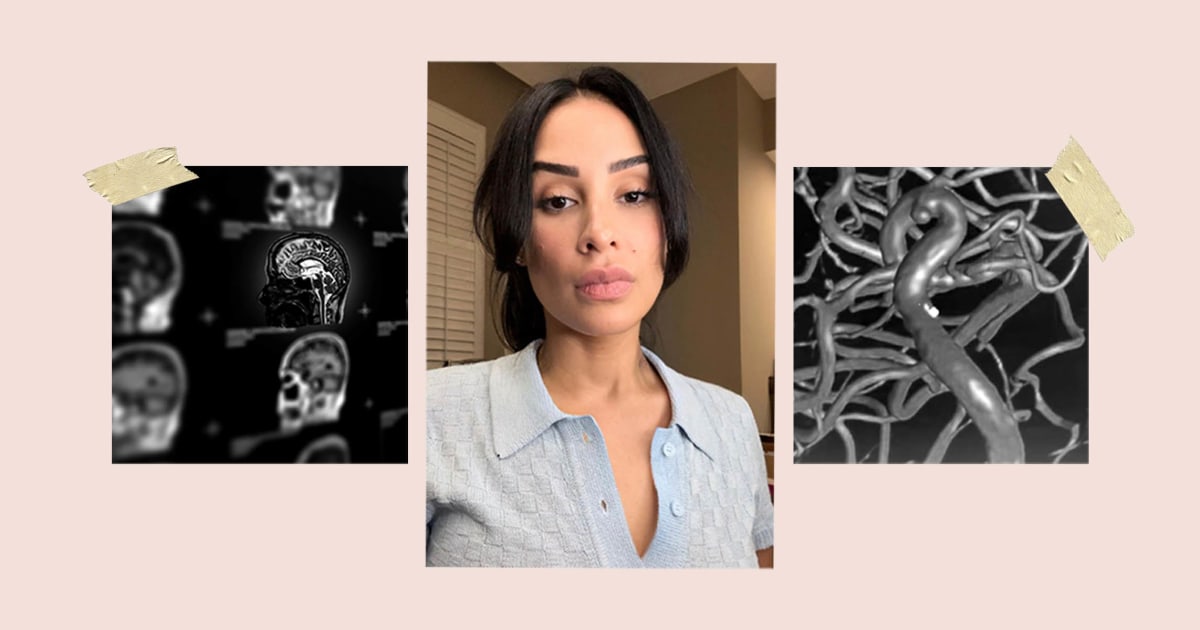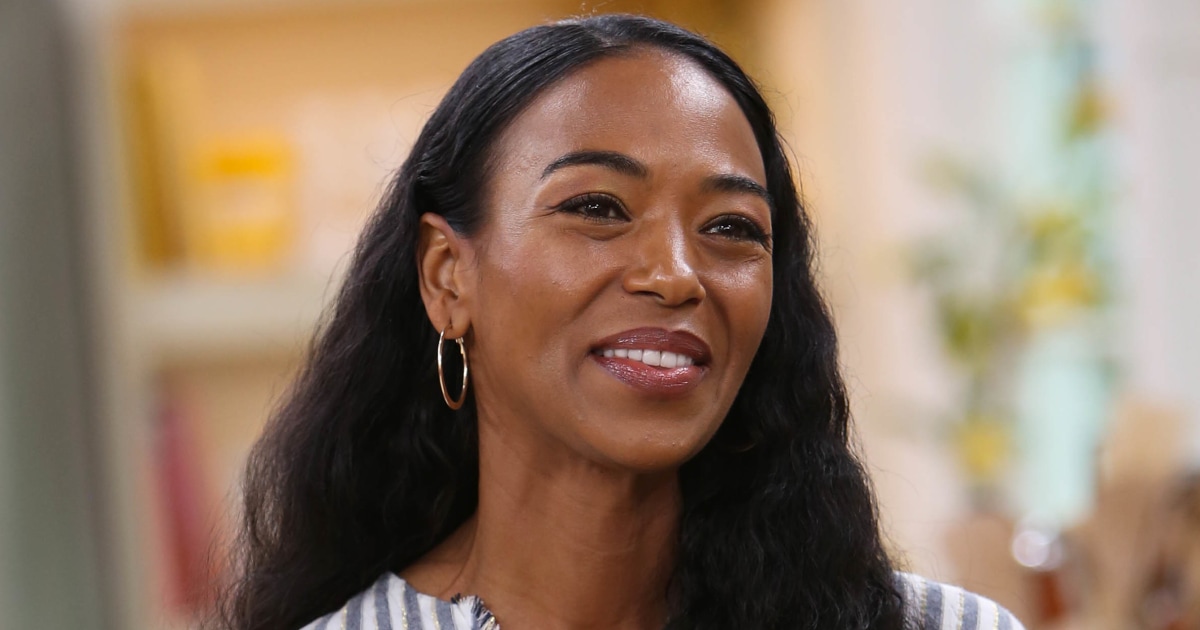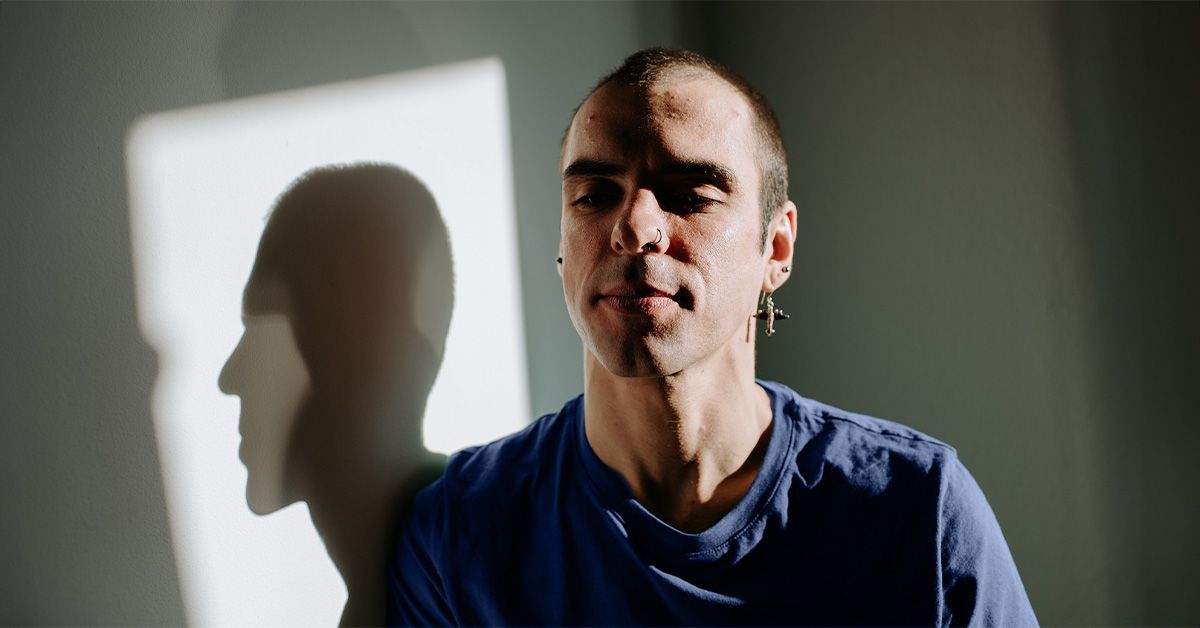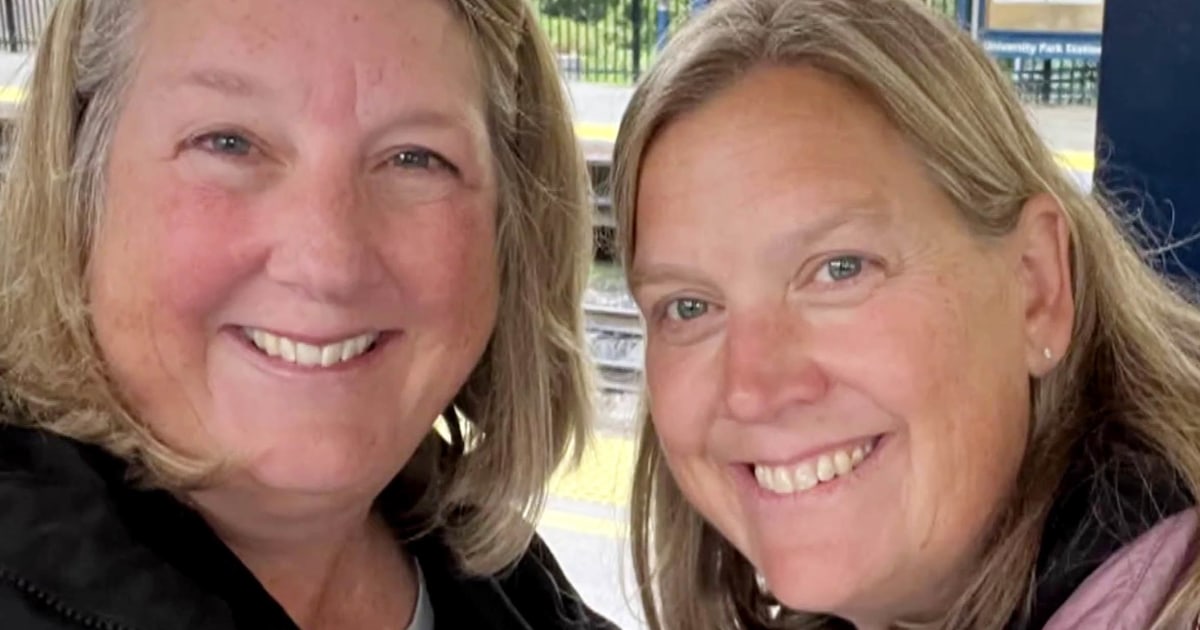When Francelys Infante developed a “really bad migraine” late last year, she thought it was caused by exhaustion from raising three kids. So, she took some pain relief medicine and went to bed.
The next day, it got much worse.
“I remember having a really bad migraine on the left side of my head and my neck. I was in so much pain,” Infante, 39, tells TODAY.com. The pressure, she says, “took over my eye” to the point where she felt like she was going blind.
“It was like (something was) pulling my neck — a really bad pressure on my neck and then pressure on my left-hand side, like if somebody was squeezing my brain,” she recalls. “Then my eye, it’s like if I had a knife stuck in here. It was so intense. I felt like I was going blind.”
Infante remembers FaceTiming with her husband, Latin superstar Romeo Santos, but having difficulty seeing him on the screen. “I was like, ‘I can’t even see the phone. Just talk to me because I can’t even see from this eye.’”
An unexpected diagnosis and an urgent operation
Two days after the headache started, she called her doctor, Dr. Steven Schnur, cardiologist and CEO of Lynx Medical, who scheduled her an MRI in New York City, where she’s based. She went to her appointment that Friday and was told she’d get her results on Monday.
“By the time I got home, which was an hour and a half later, my doctor calls,” Infante says. “He’s like, ‘I got your results, and I’m a little concerned. I didn’t like what I saw, and I sent it over to the head neurologist at Mount Sinai Miami, and we need you to get another scan with contrast tomorrow morning.’”
The next day, Infante had another scan. Three hours later, she was on a telehealth call with her doctor, a neurosurgeon, a coordinator and her husband. They had discovered two brain aneurysms, and she needed to undergo surgery as soon as possible.
“(The doctors) were like, ‘Look, you need to get surgery, like, yesterday,’” she recalls. The two aneurysms they first saw were on the main artery of her brain, which was pushing on a nerve and causing the pain in her eye. They later found a third.
A brain aneurysm is “a bulge or ballooning in a blood vessel in the brain,” according to Mayo Clinic. If an aneurysm ruptures, it is life-threatening and requires immediate surgery.
“I was in shock. … It’s something I was not expecting. I thought that he was going to say, ‘Oh, you’re inflamed, or you’re stressed.’ But when he told me, ‘You can die, you need to get surgery yesterday, ASAP’… I ended up getting on a flight, reorganized and (restructured) my whole family, my kids — I have three children under 5 — in less than 24, 48 hours,” Infante recalls.
By Sunday night, she’d flown from New York City to Miami to check into the hospital to undergo surgery on Monday, Nov. 6, 2023.
“My whole life just changed within a blink of an eye,” she says.
The emotional toll and recovery
After she left New York, her then-4-year-old son called her “crying emotionally” asking where she was. “He’s like, ‘Mom, you left. Where are you?’ I said, ‘Oh, Mommy came to do something important,’” she says.
When he asked her who was going to take care of him and his siblings, she remembers thinking, “Oh, my God, no. Why is he speaking to me this way? Why is he being so emotional and crying? And I’m like, ‘Oh my God, I’m going to die.’”
Fortunately, doctors treated the aneurysms before they burst, and her recovery has gone smoothly.
In a three-hour operation, doctors inserted a catheter into her artery and then into the blood vessels with the aneurysms, as well as small tubes called stents to prevent them from rupturing.
“When I get out of the surgery, my doctor says, ‘You’re a miracle. This doesn’t happen. You probably had a few hours, no more than a day or two, for that thing to burst, and you were not going to survive,’” she recalls.
Post-surgery, she was in the intensive care unit for two days before she was able to go home. She started to feel fully recovered after almost a month, but it took her three months to be able to work out and four months to lift weights.
Six months after the first surgery, in May 2024, she had a follow-up surgery to make sure no other aneurysms had formed and the stents were in place.
Her next follow-up is scheduled for 2025. She says she has to have annual checkups for three years after her surgery, depending on how she’s feeling. Schnur tells TODAY.com that her risk of developing another aneurysm is “extremely low.”
Brain aneurysm symptoms and risk
While brain aneurysms are scary to think about, they’re actually quite common, Dr. M. Shazam Hussain, director of Cleveland Clinic’s cerebrovascular center, who did not treat Infante, tells TODAY.com. He estimates about 1 in 50 people has one.
But “most of them are very small in size, and most people will live a long, normal, healthy life, and it will never cause them a problem,” he explains, adding that most aneurysms don’t cause symptoms unless they rupture.
In rare cases, however, like Infante’s, if an aneurysm becomes very large and starts pressing on the brain, it can cause a headache and other symptoms, according to Cleveland Clinic.
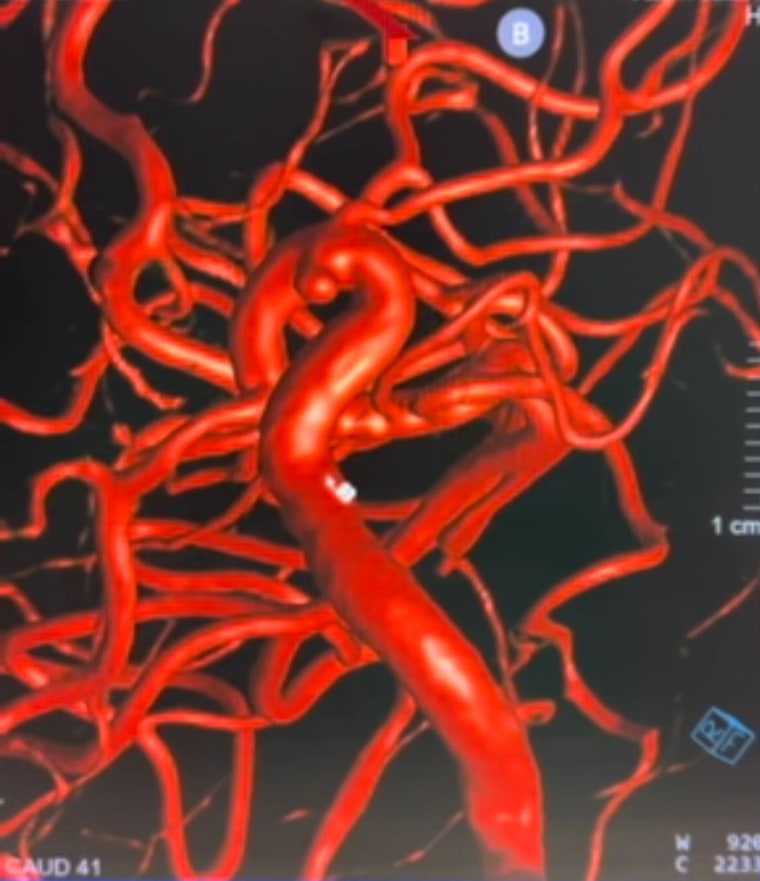
These are the symptoms to be aware of for a ruptured brain aneurysm — which is a medical emergency and merits a 911 call and heading to the hospital right away:
- A really intense headache, often described by patients as the worst headache of their lives
- Drooping on one side of the face
- Paralysis on one side of the body
- Speaking difficulties
- Vision trouble
“If those come with a very sudden onset, and in particular, if they come with that headache … call 911 and head the hospital right away,” Hussain says.
Symptoms of a large brain aneurysm that hasn’t ruptured, according to Cleveland Clinic, include:
- Headaches
- Vision changes
- Dilated pupils
- Numbness or tingling on the head or face
- Pain above and behind the eye
- Seizures
See a health care provider if you experience any of these symptoms.
While ruptured brain aneurysms require emergency surgery, not all intact aneurysms need to be treated, Hussain says. “Our job as doctors is to figure out which … are more concerning, and sometimes it does make sense to do a preemptive fix to prevent an issue from happening.”
When making this decision, doctors weigh several factors, which make the brain aneurysm more likely to rupture, Hussain says:
- Family history of brain aneurysms
- Uncontrolled high blood pressure
- History of smoking or drug use, especially cocaine
- Size and location of the brain aneurysm, especially if it’s 3-4 millimeters or larger
Brain aneurysms can occur for a variety of reasons. For example, people with certain health conditions, like Marfan syndrome and arteriovenous malformations, are more likely to develop them, as are people with a parent or sibling who’s had a brain aneurysm, according to Cleveland Clinic.
People with a strong family history of brain aneurysms will undergo screening about once every 10 years, usually starting in early adulthood, Hussain says.
Other groups that are higher risk for brain aneurysms include:
- Younger women, like Infante
- Older men
- People with uncontrolled high blood pressure
- Smokers
In many cases, brain aneurysms are not preventable, but maintaining a healthy blood pressure and lifestyle — as well as regular screenings, if needed — can help reduce risk, Hussain says.
But just as important as prevention, if not more so, is knowing the symptoms of brain aneurysms and acting quickly, Hussain says. About 25% of people with a ruptured brain aneurysm die within 24 hours, and one-third who survive are left with a severe disability.
“We hear the story too often where someone had a really bad headache and … didn’t have any other symptoms … and unfortunately they wait because they think, ‘Oh, maybe it’s just a bad headache, a bad migraine,'” Hussain says. “Then, a day or two later, the aneurysm fully ruptures, you have the mask of bleeding around the brain, and it can be quite devastating.”
“If they’d gotten checked out, hopefully you could have helped get that treated and prevented a worse situation from developing,” he adds.
Raising awareness and a call to action
Despite her good prognosis, Infante still struggles with her recovery, explaining that she “(lives) in fear” of any small headache. “I’m like, ‘Oh my God, what if it’s another brain aneurysm? What if the doctor didn’t see something?’” she says. “You start worrying, like, ‘Why do I feel this tension?’ You start overthinking.”
Headaches are common after the surgery Infante underwent, and she’s outside of the “critical period where you have to watch for complications,” Schnur says.
“Plus, she’s young and she’s healthy. She doesn’t smoke, she doesn’t have high blood pressure. She doesn’t have any of the risk factors that would increase a risk of a complication,” he adds.
September is Brain Aneurysm Awareness Month, a health campaign Infante did not know about until she was diagnosed with one. She says she’s sharing her story because she got “another chance at life” and wants to encourage women, especially mothers, to prioritize their own health.
“When you have a family, when you have kids, your priorities change. … You’re thinking about everybody else but yourself,” Infante says. “This situation that happened to me was a wake-up call because I was not caring about myself. I was caring about my kids, my husband, everybody else but me.”
“(Women are) the pillars of our families, and sometimes we forget that we are human and that we also are exposed to a lot of just not brain aneurysms (but) health issues because we’re so busy taking care of everybody else but ourselves,” she adds.
Infante says she looks at her experience like this: “Something bad had to happen so that something good could arise.” The good? Raising awareness of brain aneurysms.
“It makes me happy to share my story with people all around the world that have no idea that this could happen to them,” she says. “I was 38 years old when this happened to me. I just turned 39, and my friends and family asked, ‘What are we doing for your birthday?’ I’m like nothing, I’m just happy that I’m here this year.”
Read the full article here







